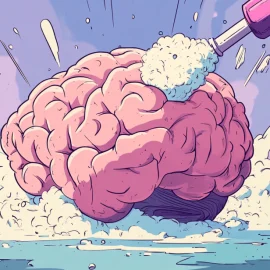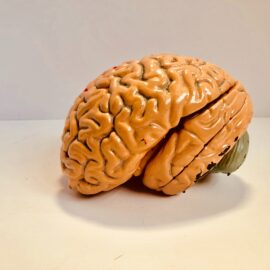
This is a free excerpt from one of Shortform’s Articles. We give you all the important information you need to know about current events and more.
Don't miss out on the whole story. Sign up for a free trial here .
What do the Ranga Dias fraud accusations say? Why are scientists under such immense pressure to publish their works?
Ranga Dias, a scientist whose discoveries could have revolutionized the field of electrical engineering, is now suspected of manipulating the results of his studies. This incident highlights the problem with the scientific community’s “publish or perish” culture.
Continue reading to learn about Dias’s case and the problem it highlights.
Groundbreaking Discoveries May Have Been Faked
Physical Review Letters, a major physics publication, has retracted a scientific paper by University of Rochester professor Ranga Dias due to suspected data fraud. Ranga Dias had previously risen to prominence in the scientific community for discovering a material that functions as a superconductor at room temperature—a longstanding “holy grail” of physics research. Although the retracted paper isn’t about superconductors (it’s a highly niche study about how manganese sulfide behaves under high pressure), the allegations have thrown Dias’s other discoveries into doubt.
What Are Superconductors?
To highlight the significance of Dias’s research—and of the suspicion that now surrounds it—let’s first examine what superconductors are and how they could be used.
First of all, a conductor is any material, such as metal or salt water, that efficiently transmits electricity. However, they aren’t 100% efficient: Almost all conductors have some degree of electrical resistance, which means a small amount of energy is lost as the electricity passes through (you could think of resistance as electrical “friction.”) A superconductor is a material that has no resistance at all, meaning that no energy is lost.
Scientists know of several superconductors already, such as mercury and certain metal alloys. However, they only function as superconductors at extremely low temperatures. Some superconductors do work at much higher temperatures, around -10℉, but those require extremely high-pressure conditions instead.
Naturally, requiring either ultralow temperatures or ultrahigh pressure severely limits what these superconductors can be used for.
Uses of Room Temperature Superconductors
A substance that perfectly conducts electricity in standard conditions could revolutionize our technology. A few of its theoretical uses include:
- Efficient energy grids. Perhaps the most obvious use for a room-temperature superconductor is improving our energy transmission and distribution.
- Superfast computer chips. Currently, computer chips are limited by electrical resistance. This is because the energy lost to such resistance gets converted into heat, and the faster a chip is, the more heat it generates. Therefore, superconducting computer chips—which have no electrical resistance and generate no heat—would bypass that limit, allowing for theoretically infinite processing speeds and eliminating the need for expensive, resource-intensive cooling systems.
- Highly powerful magnets. In fact, superconducting magnets already exist, and are used in devices such as magnetic resonance imaging (MRI) machines. However, the need to keep those magnets extremely cold limits their uses to highly controlled environments.
Doubts Plague Dias’s Findings
Clearly, a room-temperature superconductor could represent an enormous leap forward for technology, which is why Dias’s research was so significant. Unfortunately, doubts and allegations of data falsification now surround much of Dias’s scientific career, including his superconductor research.
In addition to the recent retraction by Physical Review Letters, another project Dias worked on—this one regarding room temperature superconductivity, and published in 2020—was retracted in 2022 for similar reasons. Dias is even suspected of having plagiarized over a fifth of his doctoral thesis.
In the face of these mounting accusations, it’s worth noting that the University of Rochester has conducted three separate investigations into the retracted superconductivity paper from 2020, and determined that there was no evidence of wrongdoing on Dias’s part.
‘Publish or Perish’
Dias’s alleged misconduct highlights a larger problem within academia: the “publish or perish” culture. In other words, researchers who don’t regularly publish their findings are likely to lose their standing in the scientific community, as well as their jobs.
In theory, this mindset isn’t a problem—scientists should publish regularly so their peers can see what they’re working on, keep up with new discoveries, and (if needed) review their work. However, the pressure to publish regularly drives some researchers to unethical actions.
Along with driving fraud and plagiarism, the enormous pressure to publish has made it far more difficult for peer review to catch problematic research before it’s published. Simply put, this is because there are now so many papers being published every year that it’s impossible to thoroughly review them all.
In short, although the immense pressure in no way excuses scientific fraud and misconduct, these findings suggest that the scientific community needs to address its “publish or perish” culture.

Want to fast-track your learning? With Shortform, you’ll gain insights you won't find anywhere else .
Here's what you’ll get when you sign up for Shortform :
- Complicated ideas explained in simple and concise ways
- Smart analysis that connects what you’re reading to other key concepts
- Writing with zero fluff because we know how important your time is






